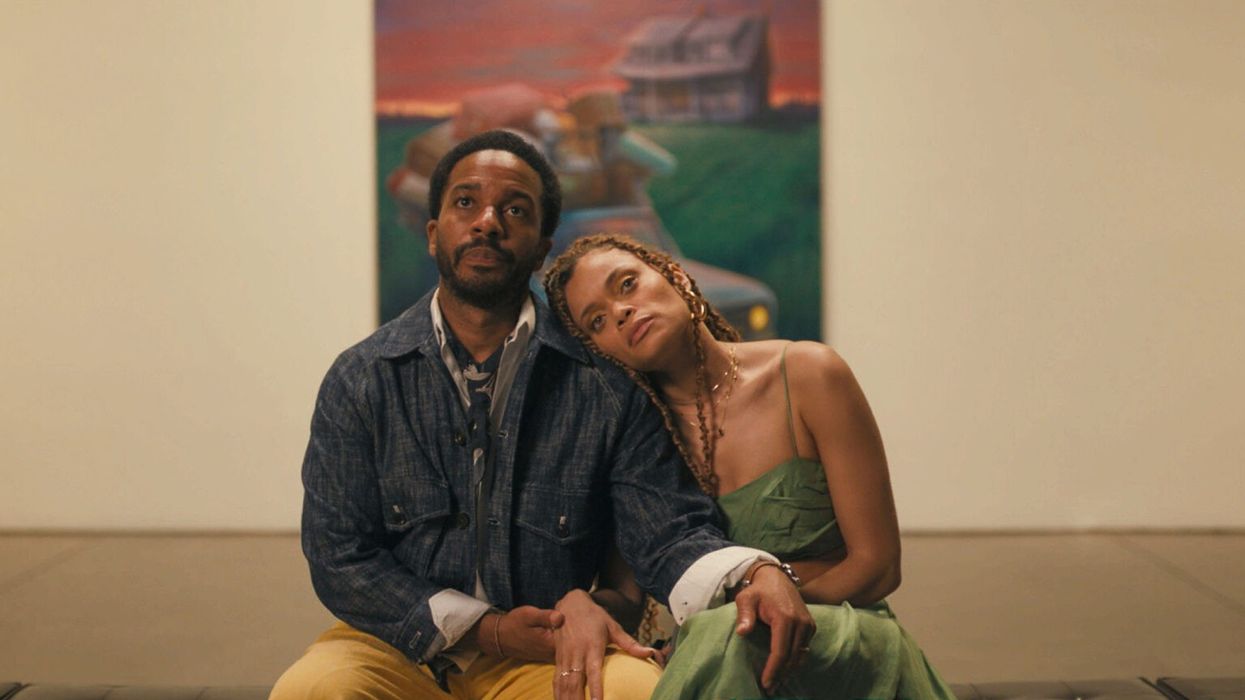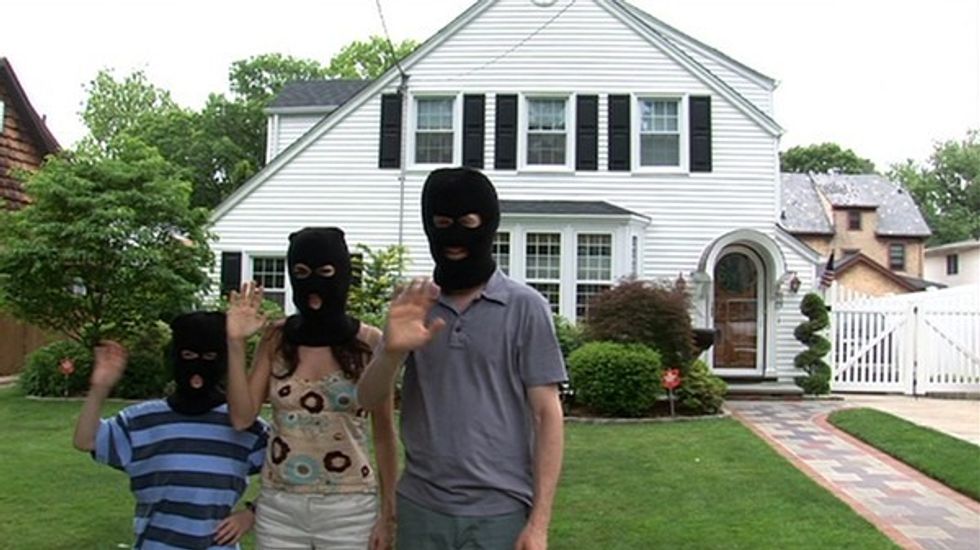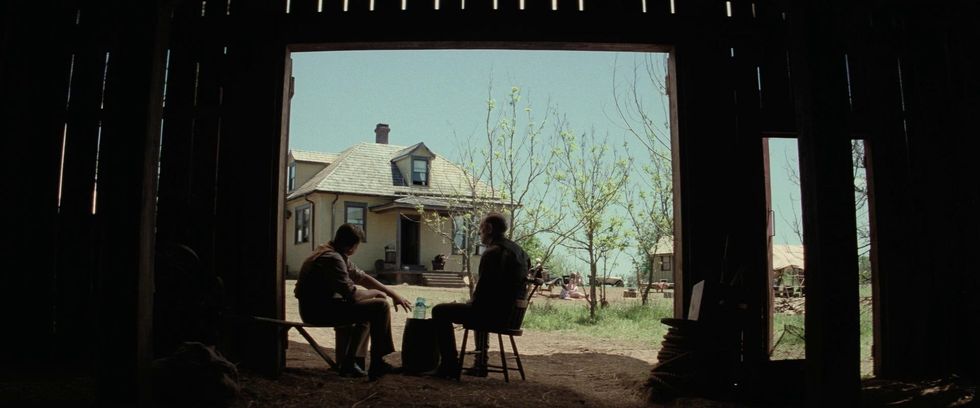Set Decorator of 'Exhibiting Forgiveness' on Characterizing Space
Art Department aficionado Olivia Peebles shares her experience working on Oppenheimer, Killers of the Flower Moon, and Sundance's Exhibiting Forgiveness

Exhibiting Forgiveness
Much like our summertime hunk Bobby Oppenheimer, a Production Designer holds a lot of weight in the creation (and/or destruction) of a world. Something, something stealing the fire from the gods and the chains of eternity and building the bomb, etc.
But for a world within a movie. You get it.
The seasoned, extremely talented Olivia Peebles knows this responsibility first hand. Peebles got her early introduction working in the film industry working as a prop master on small projects like Adult Swim's Delocated, working her way up to Set Decorating Oppenheimer, to working in the art department and building a town from the ground up in Killers of the Flower Moon, and finally, most recently, working as Production Designer for harrowing Sundance drama Exhibiting Forgiveness.
Below, read Peebles thoughtful, intricate breakdown of the inner workings of an Art Department from her prolific experience. I mean, two Oscar-nominated front runners and a critically well received Sundance film in the same year? Olivia Peebles is just getting started, folks.
The following interview with Olivia Peebles is edited for clarity and readability.
Getting Started In (and Understanding) an Art Department

Delocated
"I started in the business having no idea what production design was or that the film industry was even a 'business'.
So I sort of learned by trial and error. I had started, I found a day job essentially with my former neighbor growing up, who did set design for editorial and stills, and that was my first foray into the idea of building worlds and being paid for it. And once I found that, I was like, 'wow, this is pretty incredible'. It's a really creative outlet, but I wanted to do something that was more in the arts rather than commercial.
I found film and I started as a prop master, not understanding what that was. I later found out that the prop master handles anything that the actor touches, and then there's some weird things—often they deal with vehicles and glasses and handbags, whatever.
So, I did that for a few years, and I think that there was really, really helpful experience because that was on set and I was dealing with actors, and so it was creative in terms of character building, but exposure to how movies get made was really the thing that got me hooked. There's an energy on set that, I mean, if it grabs you, you're kind of addicted. And then after being on set and learning what everybody did, I decided I wanted to set decorate.
So the set decorator works under the production designer. I guess the structure of the art department is such that there's a production designer who is hired by the director and the producers for their creative vision, their interpretation of the script. And often we will make look books based on what our take on a story is, and we look at these images with the director, and if we're sort of vibing and we get the job, then that's the foundation for a lot of the work that we do.
Then we start building upon it, set by set, and flushing out to research for each set. But the production designer also runs or is in charge of holding up the creative integrity with the set decorator. Set decorator deals with the set dressing. So it's a lot of furniture, it's also wallpaper, it's flooring for a set build. Lighting has become a big part of the job for a set decorator as we move into a world where we use way fewer movie lights.
I think that's a really important part of the conversation for the decorator and the art director who is in charge of scenic and construction and graphics, and any build that has to happen, that's their world."
Production Designer - 'Exhibiting Forgiveness'

Exhibiting Forgiveness
Courtesy of film-grab.com
"It was such a privilege to be welcomed into [director of Exhibiting Forgiveness, Titus Kaphar's] world. He was very clear about it being semi autobiographical, but only semi.
He wanted there to be some distance between himself and his life and that of [the main character] Tarrell the painter. We had a lot of conversations. He shared with me a lot about his childhood, his mom and his family, and what it was like to grow up in Kalamazoo. Our story takes place nowhere specific, but a lot of the research was based in Kalamazoo, MI, which is a little bit outside of Detroit where he grew up. So he had made a small production design reel for me to watch of him driving around the neighborhood and some snapshots of the community. So we started there and kind of talked about what we saw in those moments.
And then I had made an initial lookbook, so I had some sort of references that I liked that I was working off of. And then we talked a lot about character that was super important to him. The movie is, when you see it, you'll see it's really, it's a human story. It's a good story of the human experience. And for me, it was most important to just create these spaces that were the backdrop for these people and have information in those sets that could help build on the character, but not distract us.
Really, they became stages for these performances.
Almost every set we had was a full dress, but Tarrell's house, we were really fortunate. Our location manager, Phil Prince, was an all star and he worked really hard to find us this special location. The house was built by this architect, Barry Poskanzer, and it was the most perfect house for the character.
We had been looking at a lot of natural colors for Tarrell—a lot of greens, but rich deep greens and browns, raw amber, like gold tones, saffron rusty stuff. And when Phil showed us this house, we walked in and we pretty much just knew. We were supposed to look at two houses, and I had been gravitating towards the other based on the photos, and then we walked into this space and it was so right.
And then working with my set decorator, Eric Tumolo, we had the privilege of having access to Titus Kaphar's personal art collection. So we worked with his studio team to curate that space. A lot of the work from his collection, and then a handful was also from his fellows at NXTHVN, which is this incredible place that he runs in New Haven where he nurtures voices from the community and gives artists studio space.
Yeah, I mean, I think when you see the film, you'll see that it was really essential for [Tarrell's Father] La'Ron to not be a caricature of an abusive drug addict. We were really careful to not show any violence or any drug use, and I wanted to keep that perspective as I was making La'Ron's set and really just make it a place, I know I keep using this analogy, but a stage for John Jelks. He's a theater actor too, so he has a monologue that takes place in that basement that is heart wrenching and intense and traumatic.
It was important to show the difference in Tarrell's space and La'Ron's space. Tarrell, who has worked so hard to escape this generational trauma, and all of this pain that has been inflicted upon him by his father, La'Ron. So he's built this warm, safe space for his family, perhaps out of necessity."
Set Decorator (New Mexico Unit) - 'Oppenheimer'

Oppenheimer
Courtesy of film-grab.com
"It was crazy.
I did all of New Mexico, so we shot that in the desert, in a desert in the town of Belen, which is a little bit south of Albuquerque. And it was a late night, it was really cold. We had gone into nights for that last portion in New Mexico. The conditions were so extreme. We had rain rigs and it was freezing and windy and there were sandstorms, but for the actual explosion, the special effects team built, I don't know what chemicals they used, but they built basically sort of mini versions of an atomic bomb.
And the shape of the cloud would be exactly the same. So they had three of 'em. I think we only shot two of them— detonated two of them. But everybody went up on this peak, this mountain peak, and watched from a distance. And I mean, it was sizable for sure. It was very wild to see."
Art Department - 'Killers of the Flower Moon'

Killers of the Flower Moon
Courtesy of film-grab.com
"I mean, it took a million people on Killers of the Flower Moon.
We basically built a town in the small town of Pawhuska. There were a lot of abandoned structures and with a couple of operating businesses, but a lot of these buildings had been sort of rotted out, but their facades remained the same. And then there were a few gaps in the street that needed to become something else.
So Jack built a hotel, we built a movie theater, and then that film, because we were all out in Oklahoma for 10 months or something, it evolved in this really natural and fun way where we had to build a photo studio, and Jack decided to put it out in this parking lot so that he could build the studio with windows facing north to get the natural light.
It it was almost like a playground of all of these different sets. But that was the first time I had seen how something like that happens at that level. And I mean, it was just so cool."
Tips for Becoming an Art Department All Star

Killers of the Flower Moon
Courtesy of film-grab.com
"My advice is based on my personal experience, which I feel very fortunate to have had.
When you're first starting out, take as many jobs as you can and just learn. I was really lucky and sort of just jumped into a role of responsibility, and I think that also taught me a lot, but asking questions if you don't know, observing your peers is really important.
I think for me, having been a prop master and a decorator, I've worked under a handful of other designers, and that really shaped how I wanted to be as a designer. I learned so many different things from different people.
Then once you get to a place where you're starting to have more choice in what jobs you take, I think it's really essential to only take jobs about which you're passionate, because you give a portion of yourself to every project. It's inevitable. You give so much of your time and beyond time, your brain is totally occupied by the project for the duration of the shoot. So you want to make sure you believe in what you're doing and the story you're telling.
And I think for me, Exhibiting Forgiveness was really that project."

No Film School's coverage of Sundance 2024 is brought to you by Canon.
















